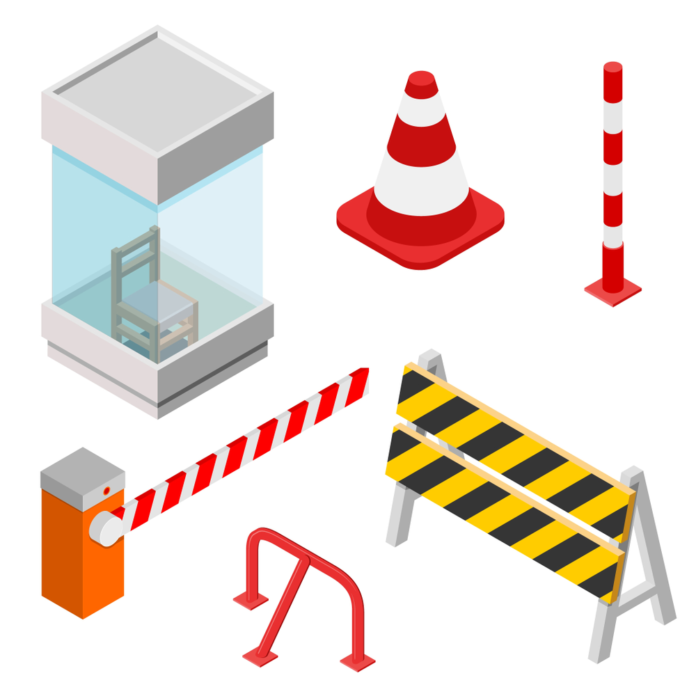Have you ever passed by a construction site and wondered the role of those robust looking barriers? Does their bright, often orange or red, colour catch your eye? Or perhaps you’ve even been annoyed by their obstructive presence on public pathways. Here’s another quick question: Have you ever pondered about their immense significance in ensuring safety in and around construction sites? This comprehensive guide dives deep into the often underrated, yet crucial, world of safety barriers in construction zones.
Understood broadly, safety barriers form an invaluable part of any construction site, significantly reducing accidents and enhancing overall safety. Despite their traditional association with mere temporary inconvenience, the importance and benefits of these barriers extend far beyond this simplistic viewpoint.
We will explore these critical elements in detail, shedding light on their types, the legal obligations associated with them, and why installing them is not just necessary but potentially life-saving. Prepare to gain a comprehensive understanding of safety barriers, a feature oft-forgotten, concealed within our everyday landscapes.
What Exactly Are Safety Barriers?
Operating within bustling construction sites exposes workers and even passersby to numerous potential hazards. Enter the heroic safety barriers! They’re designed in a way that minimizes danger and protect against various forms of harm such as falls, collisions, and even preventing unauthorized access to construction zones.
Diverse in their nature, safety barriers can serve both temporary and permanent functions, depending on the project in question. Coming in different shapes, sizes, and materials – each style designed to tackle a specific set of hazards. As such, these barriers form an integral part of Risk Management within construction sites.
So now that you have a basic idea about safety barriers, let’s delve into their role and benefits at a construction site, shall we?
Why Are Safety Barriers So Crucial?
Imagine operating heavy machinery without any physical demarcation or, worse, walking on the edge of a high-rise construction structure with no protective barrier to prevent a possible fall! Petrified at the mere thought, aren’t you? Here’s where safety barriers come in!
Safety barriers provide physical separation between workers and danger, effectively curbing the risk of severe injuries and unfortunate fatalities. Beyond safeguarding the workforce, these barriers also benefit pedestrians and vehicles in vicinity, ensuring harmonious co-existence between construction sites and urban spaces.
But here is something even more interesting: running a construction site sans safety barriers is not just dangerous but also illegal!
The Legal Obligations Of Installing Safety Barriers
Every country has its specific set of laws about workplace safety, and failure to comply can lead to hefty fines, legal action, or worse, irreversible harm to personnel.
In Australia, for instance, the ‘Work Health and Safety Regulations 2011’ stipulates clear guidelines on the necessity of safety barriers at construction sites. Abiding by these laws essentially contribute to a safer workplace, thereby promoting optimal productivity minus unnecessary stress and threats.
Hence, safety barriers are more than a safety precaution – they are an ethical and legal responsibility.
Advantages Of Safety Barriers
Beyond the obvious safety provision, barriers significantly uplift the operating efficiency of a work site. They form well-organized, clearly outlined spaces allowing for smoother navigation, reduced congestion, and a streamlined flow of work.
The mental reassurance they provide brings about enhanced focus, motivation, and indeed, better output. Besides, robust safety measures like these go a long way in boosting industry goodwill and client trust.
Potential Drawbacks
With every pro, there may come a con. Safety barriers can sometimes seem obstructive, and their installation does add to project costs. However, the long-term benefits undeniably outweigh these temporary limitations. Ultimately, no cost can be equated with the welfare of the workforce.
Conclusion
In sum, safety barriers in construction sites are an essential, non-negotiable feature. They protect, segregate, guide, and inspire trust, forming the invisible backbone of any construction site. It’s high time we acknowledged them for the unseen heroes they truly are!
For construction site managers, key stakeholders, or even curious passersby – everyone can benefit from a deeper understanding of these foworkrce guardians. Remember, safety always comes first, and these barriers are a testament to this very principle. With this guide, we hope you’ll never view a brightly colored barrier quite the same again – but rather appreciate their ultimate importance in our built environments.









I enjoyed the way you tackled this subject—great insights!